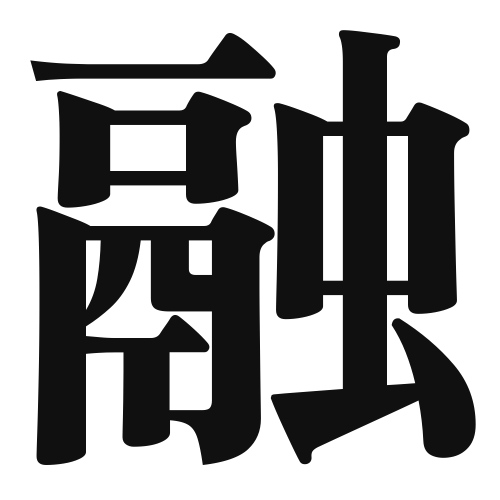1. Overview of Meaning
The kanji “融” (yū) primarily means “to melt” or “to blend.” It conveys the idea of combining different elements into a harmonious whole, often used in contexts related to melting substances or integrating ideas and cultures.
2. Formation and Radical
Formation of the Kanji: The kanji “融” is a compound character (会意文字) that combines elements to convey its meaning. It consists of the radical “氵” (water) and the character “融,” which relates to the concept of melting or blending.
Radical: The radical of “融” is “氵,” which is associated with water, emphasizing the fluidity and adaptability of the concept.
3. Examples of Usage
Common Words and Phrases: Some frequently used words that include “融” are:
- 融資 (yūshi) – financing
- 融和 (yūwa) – harmony or reconciliation
Example Sentences in Daily Conversation:
- このチョコレートはすぐに融ける。 (Kono chokorēto wa sugu ni tokeru.) – This chocolate melts quickly.
- 文化が融和することは大切です。 (Bunka ga yūwa suru koto wa taisetsu desu.) – It is important for cultures to blend together.
4. Synonyms and Antonyms
Similar Kanji: A kanji with a similar meaning is “溶” (yō), which also means “to dissolve” or “to melt,” but it often refers specifically to the process of a solid turning into a liquid.
Opposite Kanji: An antonym of “融” is “固” (ko), which means “solid” or “to harden,” representing the opposite state of being fluid or blended.
5. Cultural and Historical Background
Relation to Japanese Culture: The concept of “融” is significant in Japanese culture, particularly in the context of harmony and integration, which are valued traits in social interactions.
Proverbs and Idioms: One relevant proverb is “融通無碍” (yūzū muge), which means “flexible and adaptable,” highlighting the importance of being open to change and blending different ideas.
